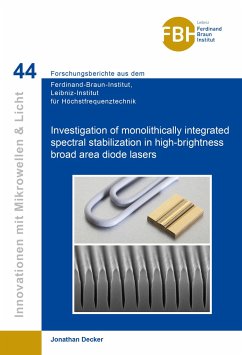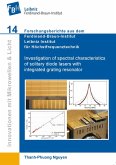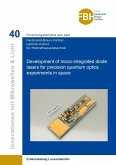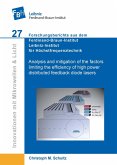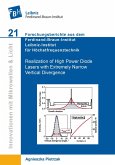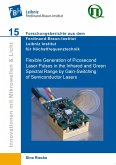High-power distributed feedback broad area (DFB-BA) lasers are key components for pumping narrow absorption bands in solid-state lasers and for brightness scaling in direct diode laser systems via dense spectral beam combining. Today, the market for these lasers is dominated by DFB-BA lasers with low-order Bragg gratings that are integrated via buried overgrowth techniques. A promising alternative are DFB-BA lasers with high order grat-ings that are directly etched into the p-side of the epitaxial layer structure, so that no interruption of the epitaxial growth process is required. Prior to this work, studies of such DFB-BA lasers were restricted to experimental proof-of-principal realizations. Further, adequate simulation tools were not available, as surface-etched gratings introduce a high refractive index contrast and can therefore not be calculated directly within the coupled mode theory (CMT). Hence, this work treats the development of efficient high-bright-ness DFB-BA lasers and laser arrays with surface-etched gratings at 975 nm. The development of these lasers encompasses three steps: First, a design study of high-brightness Fabry-Pérot laser diodes that are suitable for the integration of surface-etched gratings. Second, the implementation of an adequate numerical model for the simulation of high-order surface-etched DFB grat-ings. Therefore, a simulation based on CMT is extended by bi-directional eigenmode expansion and propagation modelling. And third, a comprehensive experimental study of spectrally stabilized high-brightness DFB-BA lasers. Optimized DFB-BA lasers (L = 6 mm, W = 30 µm) operate with 56% peak conversion efficiency and achieve 5.8 W output power with a slow-axis beam parameter product ¿ 1.8 mm×mrad, and a linewidth ¿ 1.0 nm.

